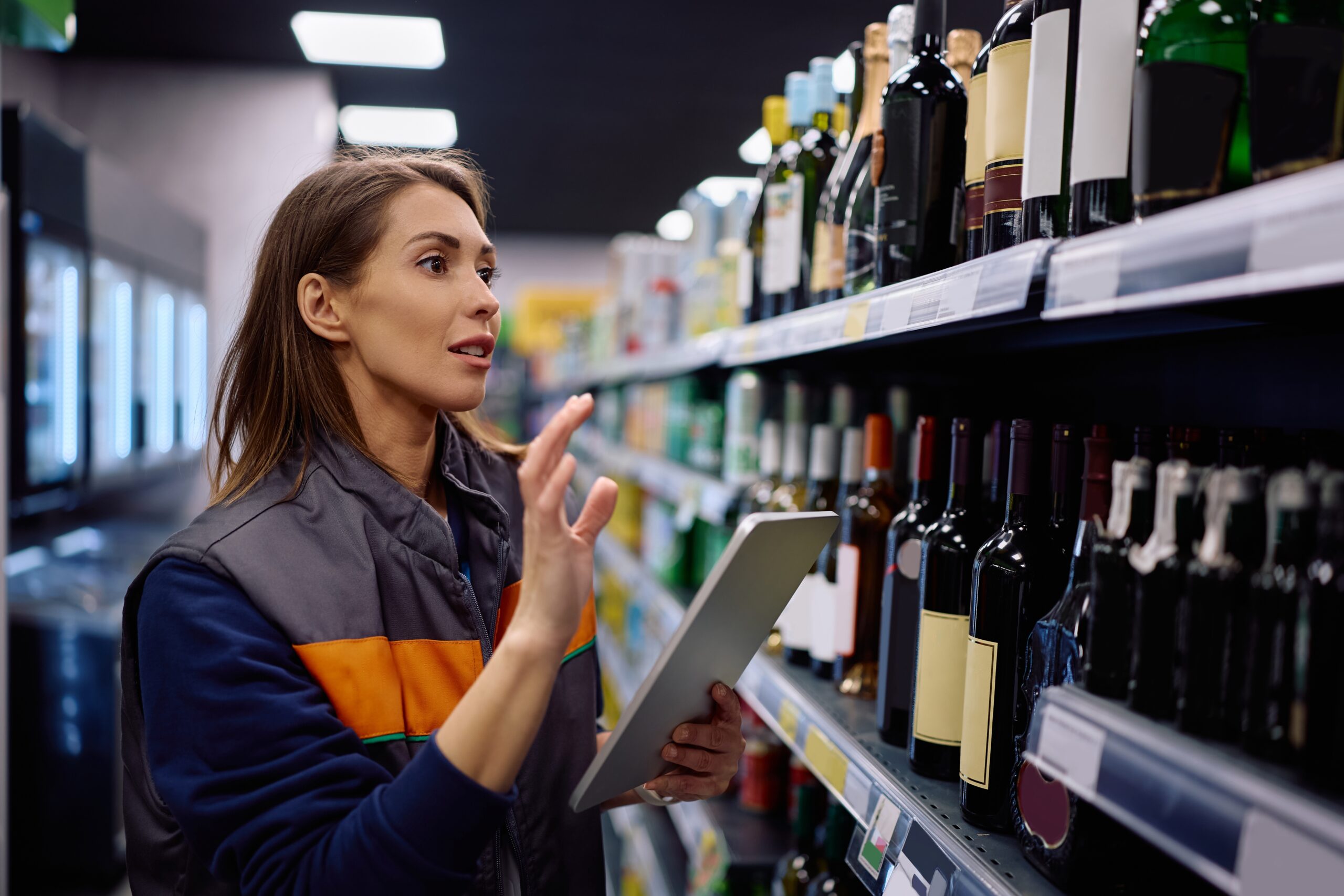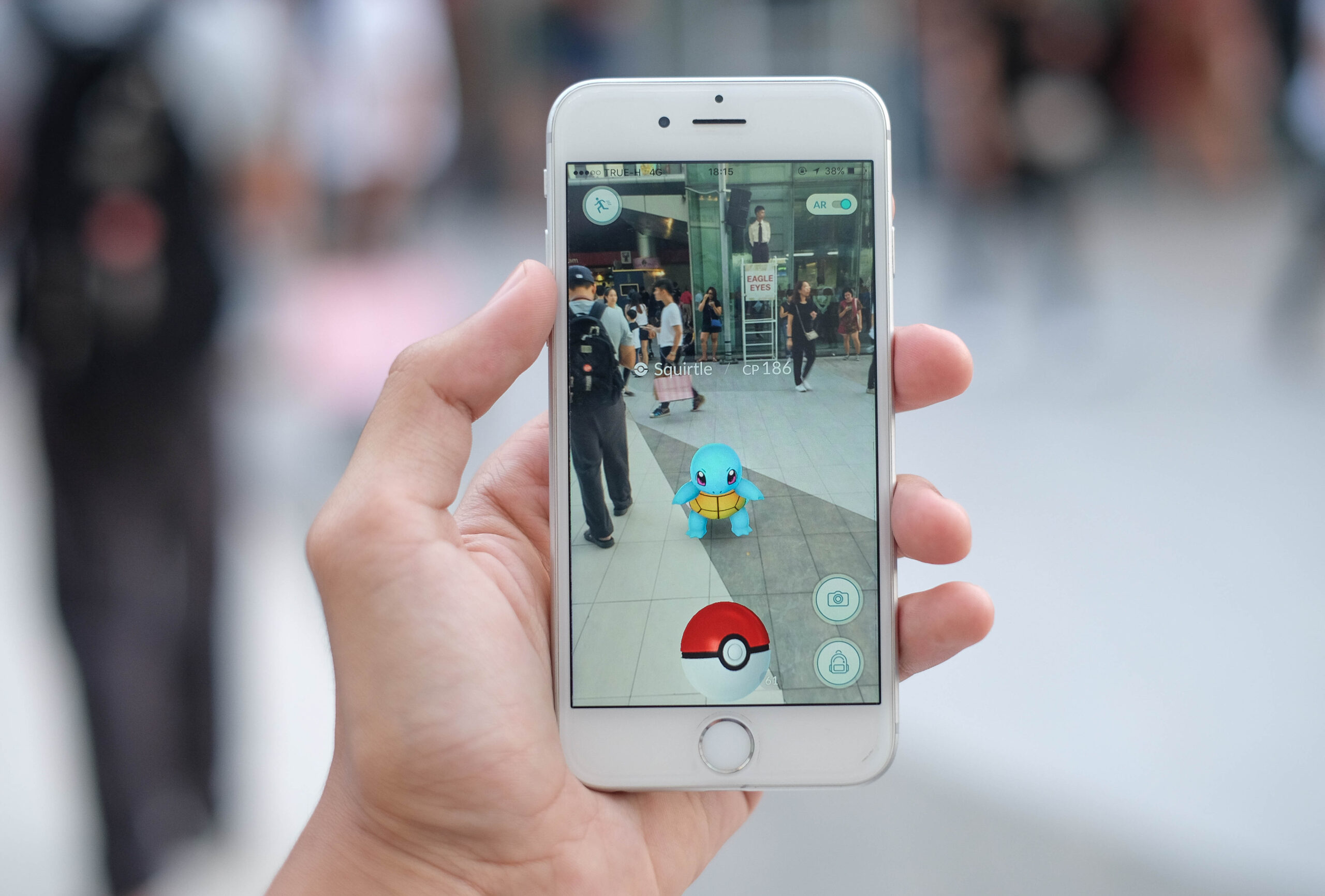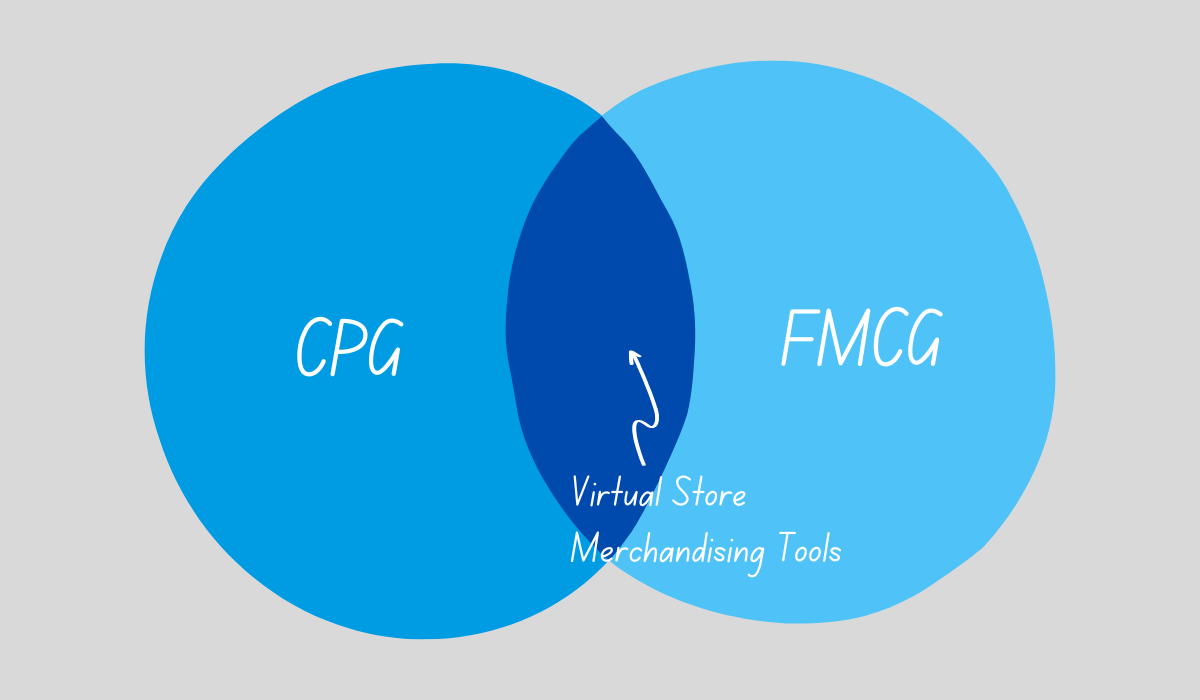The consumer goods retail industry has always been a highly competitive environment. In response to the constantly changing nature of consumer behavior, the methods and tools used to sell products must evolve as well. Especially in the wake of the pandemic, there’s a widespread effort to align with new consumer habits. One emerging solution to this evolution is virtual reality in retail.
If you’ve noticed the growing presence of virtual reality in retail, you might understandably have some questions. In this blog, we’re breaking down how VR is used in the retail and consumer goods industry, and why it’s a technology that CPGs should keep their eye on. If your brand has an interest in increasing profits going forward, we’re here to give you an in-depth, but comprehensive, overview of why and how this technology can help your brand grow.
What is Virtual Reality in Retail?
Today, virtual reality is not yet a technology that most people closely associate with the retail space. In fact, if you Google “virtual reality” all of the top results are associated with the gaming and entertainment industries. Then there is the confusion between virtual reality and augmented reality. However, for those in retail and merchandising, this technology is being adopted for your business needs as well. Virtual reality technology can now support shelf and store layout planning, product testing, sales enablement, and more.
Traditionally, brands and retailers do research by staging shopping simulations in an artificial marketplace to test out all kinds of in-store marketing and layout options. For years, the industry standard has been to build a physical test store, but virtual reality in retail removes that need. Brands can visualize entire store layouts through a realistic virtual store simulation, instead of building a mock store. They can test new marketing concepts, product launches, category flow, and evaluate how those changes would perform with real world shoppers. Interactive retail planning technology allows CPGs to visualize any of the following changes in a 3D virtual reality experience.
Use-cases for virtual reality in retail:
- Shelf arrangement & assortment: View 3D models of new shelf arrangement proposals in a virtual environment where you can make small adjustments and test out an unlimited number of arrangements.
- Pricing: Identify which pricing combinations are the most successful with potential shoppers.
- Promotions/Signage Displays: Test your latest marketing content through a no-risk VR experience and get the full picture of how it looks, without spending the resources it would take to create real-life versions.
- Category Visualization: Utilize a realistic simulation to visualize different configurations of category placements.
- New packaging and products: Observe a new product or new packaging the same way future shoppers will and experiment with as many packaging ideas as necessary.
Virtual reality in retail is not limited to these use cases, as brands can visualize any in-store change that customers can experience.
Real-Life Success Stories
At InContext, we have over a decade of experience in helping CPGs realize massive growth opportunities by leveraging virtual solutions. Here are a few case studies that demonstrate some of the gains our clients made using virtual reality in retail.
- One manufacturer identified a strategy with a $40M growth potential after a ShopperMX shelf test revealed the results of using horizontal blocking.
- Virtual A/B tests for another manufacturer uncovered an opportunity for +9% sales growth, 2X+ growth versus the control, and an opportunity to increase positive shopper attitudes.
- After testing a packaging redesign concept, one manufacturer saved over $500,000 by halting a new design that would not perform as well with shoppers.
Where does Traditional Merchandising Fall Short?
When CPGs are in the process of going to market with a new product, there are a number of common challenges that they face. Some of them have become accepted norms of the industry, and many are associated with the standards of traditional product merchandising. These challenges often include:
- Time: Building a mock store, preparing physical products, marketing material, shelf arrangements, scheduling, and everything else involved in traditional market testing is incredibly time-consuming. Many of these tasks can take months to complete, as well as several more months to get any results back. Even then, the data you acquire from these tests don’t cover the full scope of what can be learned from virtual testing.
- Cost: Just as these tests take up valuable time, they also put a major dent in your budget. The production cost for the materials and labor required is often much heftier than the cost of virtual reality software.
- Confidence: Unfortunately, traditional merchandising often results in a lack of confidence in the success of the shelf arrangement changes, new product, etc. Many decision-makers are reluctant to buy into a new idea and risk potentially losing profit, especially if there’s not substantial evidence that it will increase profits.
- Communication: There is a lot of value placed in the decision-making processes of retail merchandising and for that reason, there are always multiple teams and parties weighing in. This can often exacerbate the issue of time, prolonging the decision-making process, especially in the case that the people involved have to travel or are communicating remotely. And if those decision makers aren’t all tuned into the same customer experience that is being tested, reaching agreements can prove to be a challenge.
Advantages of Virtual Reality in Retail
The goal of retail planning and merchandising is to get the best potential outcome from your product offerings. By accumulating more valuable data on your customers, such as how they think and behave in reaction to your in-store changes, you can produce informed retail strategies that have higher success rates. As a result, you maximize profits by delivering customers what they want to see throughout their store experience.
The major advantages of using virtual reality in retail include:
- Efficiency: Unlike building a physical retail store, simulated test marketing typically takes only a few weeks and the preparation saves on a lot of resources. By creating the retail experiences you want to test out virtually, you save time, money, and labor involved in traditional merchandising.
- Metrics: The measurable insights obtained from virtual testing prove to be a major advantage throughout this process that help maximize profit. Behavioral data shows what shoppers are doing within your store setup: how they navigate the aisles, which products they pick up, and which ones they purchase. As you test out different category flows, marketing materials, and shelf arrangements, you get data on how this behavior affects shoppers. Attitudinal metrics look for what shoppers are thinking internally, what their reactions are to marketing displays, how they feel about products, etc. These metrics are often a key factor in determining if a new display option is a no-go in the eyes of consumers.
- Flexibility: A major benefit of virtual reality testing is the versatile functionality. Your brand can visualize and test any number of shelf arrangements, category flows, marketing plans, etc. In addition, you can compare the metrics of each merchandising configuration to identify what impact they have on your top and bottom lines. This ability to experiment in real-time with detailed learnings gives brands the permission they need to think big and be creative, without the fear of risking profit. The versatility of virtual reality software enables you to find the best solution for growth.
- Buy-in: Virtual reality software adds a whole new level of legitimacy to a CPG’s testing process. With one centralized platform to showcase your new ideas, layouts and products–as well as their potential success to retailers–it’s easier to see the value of your work. Metrics and immersive experience through virtual reality give decision-makers the confidence to buy into your retail strategies when they may have previously opted for a competing offer.
- Communication: Virtual reality platforms like ShopperMX™ offer a smooth user experience and give you and your team the tools needed to build a streamlined process that eliminates communication inefficiencies. Without the need to travel to a mock-up store center, virtual simulations help everyone get on the same page, communicate easier, and make decisions faster.
A number of the standout benefits associated with virtual reality in retail involve added efficiency, communication, and ways to save time, all of which impact your brand’s ability to maximize profits. The more efficient your go-to-market process and your data is, the better chance you have of reaching new heights of success with your shoppers.
Adjusting to Changed Consumer Habits with VR
CPGs have always had to find creative ways to get ahead of the game and be ready for the next trends. For example, brands have been responding to the increasing trend towards online shopping in favor of brick and mortar stores for years. But the retail market of the last few years shook up the industry more than usual. Amidst the ongoing impact of the pandemic, virtual reality for retail is an asset for brands trying to hit these moving targets. Some recent trends in the retail space include:
- Shoppers are cooking at home more than ever before, and are open to exploring new products and solutions.
- Since the pandemic lockdown, worries about safety are more prominent than in the past.
- A low supply of consumer goods and limited labor means products shoppers want aren’t always on the shelf.
There is now an even greater need for transparency when it comes to in-store communication. Shoppers need to understand what products might be out of stock and when they will be available again. They need compelling signage and displays to help them discover new items or quickly find their staples to get in and out faster. How does the retail business correctly recalibrate to address these changes? By moving quickly. Virtual reality retail simulations make it possible to test new ideas, understand which ones will move the needle with shoppers, and gain retailer buy-in, all before your competitors. Reacting fast and staying ahead of the game is doable when you have an efficient process and the tools needed to respond to changed shopper habits and attitudes within the retail industry.
Awareness & Trust
Although VR technology in retail has not yet broken ground in every part of the retail planning industry, there are so many reasons to take the leap. Some common misconceptions about this technology include the notion that it’s too expensive, is difficult to learn, requires a VR headset, or that it’s too big or a risk to invest in. Many are not even aware of the presence of virtual reality software in the retail space, let alone how it could help their CPG grow.
As more software solutions are changing the way we work in every industry, it’s normal to be hesitant to invest in new technology. But, there’s no need to fear that your brand is taking a big financial risk or that you’re replacing jobs with virtual reality software. In fact, it’s just the opposite: VR retail planning solutions simply help your team work faster and achieve more, for less.
Contact InContext Today
Are you interested in investing in immersive virtual reality for retail so your company can maximize on profits? Contact InContext to get started on getting better insights into the shopper’s experience. Additionally, learn more about the transition process from traditional merchandising to launching a virtual reality retail program here.





